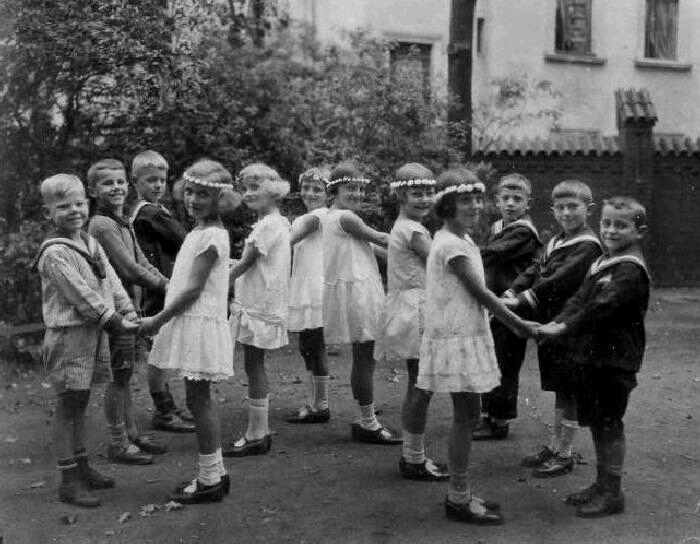
Figure 1.--Here we see some German children in the 1920s setting up for a festival dress. We would guess it was some kind of May Day celebration. The girls wear hair garlands and white dresses. The boys mostly wear sailor suits. |

|
Germany like other European countries have a rich and and diverse history of dance.
We have only limited information on dance in Germany. We note traditional folk dances, classical ballet, modern dance, and contemporary dance. We know nothing about social dance at this time. The traditional folk dances like the Schuhplattler and Polka have sprang from the Alpine southern regions (Bavaria and Tyrol). Both involve lively music, destinctive footwork, and colorful costumes that were historially charactreristic of the regions.
We know most about folk dancing. The dance that we are most aware of at this time is the ethnic Bavarian Schuhplattler dances performed as Octoberfests and ethnic festivals. We know that there was a revival in all aspects of folk culture, including songs and dance, in Germany during the late 19th and eraly 20th century. The Wandervogel in particular was noted for this. The Hitler Youth in the 1930s adopted many features of Wandervogel, but an interest in folk dance was not one of them.
We also note the more ophiticted club dances of Berlin. Germany also have an important traditun of classical ballet and modern dance. German ballet have gained international acclaim. Notable ballet companies included the Stuttgart Ballet and the Hamburg Ballet. German dancers are known for echnical precision and expressive storytelling. Contemporary/moderrn dance in Germany has been at the forefront of the scene. They are seen as pushing boundaries as ell as exploring new forms of expressive movement. Unlike othr forms of modern artitic expression, the NAZIs were lrgely tolerant of modern dance. We ere not sure why. We suspect it had to do with the body beautiful and fitness movements promoted by the NAZIs. We even notice the NAZIs tolerating one of the most notable proponents of modern dance--Gret Palucca and her dance school. Palucca was Jewish. Many individuals involved in modern dance fled NAZI Germany. (Most were Jewish or anti-NAZI.) Palucca was absolutally apoliticl--totally abscorbed with dance. The NAZis did not close her school until 1939. And even then she was not arrested and depoeted. Companies like Sasha Waltz & Guests and Pina Bausch’s Tanztheater Wuppertal are important local institutios. They have challenged long-held ideas on dance and performance. Their work tends to blend , aspects of theater, music, and visual art.
Navigate the Boys' Historical Clothing Web Site:
[Return to the Main German fine arts page]
[Return to the Main German activities page]
[Introduction]
[Biographies]
[Chronology]
[Clothing styles]
[Countries]
[Photography]
[Bibliographies]
[Contributions]
[FAQs]
[Glossaries]
[Images]
[Links]
[Registration]
[Tools]
[Boys' Clothing Home]
